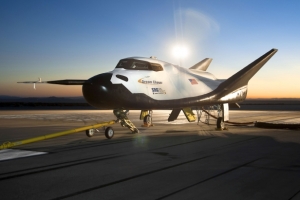The CEO of SpaceX will reveal how he intends to build a human settlement on the Red Planet
 Space Exploration
Space Exploration

 Space Exploration
Space Exploration
The CEO of SpaceX will reveal how he intends to build a human settlement on the Red Planet
 News
News
According to a new theoretical study, when our Solar System was born 4.6 billion years ago, only eight per cent of the potentially habitable worlds that will ever form in the universe existed
 Solar System
Solar System
NASA’s Patrick Troutman speculates on the future of our planet
 Space Exploration
Space Exploration
How many companies and agencies are building vehicles to take humans into space?
[fototag id=”kankohmaru”]
Hover over the icons for more information. Illustration by Adrian Mann.
Sometimes when we envision the future of space exploration, we like to let our imagination get the better of ourselves. Today we’re seeing a new breed of rockets and space vehicles that are increasing our ability to access space like never before.
So when we come across a design like the Kankoh-maru, even though it’s blatantly obvious we won’t be seeing anything of the sort flying in our lifetimes, there’s no harm in dreaming of a future where such vehicles are commonplace, right?
The Kankoh-maru, as seen above, was a concept devised by the Japanese Rocket Society in 1993. Named after the steam-powered Japanese Kankō Maru warship, this bizarre egg-shaped vehicle would take off and land by itself, known as VTVL (vertical takeoff and landing), as a single-stage-to-orbit (SSTO) spacecraft. The whole thing is reusable and, with each launch, the Kankoh-maru could take 50 people into orbit.
In recent years a variety of tests on VTVL vehicles have been carried out, most notably SpaceX’s Grasshopper rocket, but nothing on the scale of the Kankoh-maru has ever really been considered, let alone tested.
Nonetheless, the design of the Kankoh-maru is certainly intriguing. This vehicle, weighing about 550 metric tons (1,200,000 pounds), would tower 23.5 metres (77 feet) above the ground and have a diameter at its base of 18 metres (59 feet).
The spacecraft is split into two sections, with a propulsion section at the bottom using four boosters and eight sustainer rockets providing thrust at sea level and in space respectively. Above the propulsion section is the payload section, with the cockpit sitting at the very top.
The purpose of this spacecraft would be to take a large number of crew into Earth orbit, either to a orbiting space hotel or just for short orbital trips. The ambitious goals of the spacecraft would see 700,000 passengers a year being taken into space via a fleet of 52 Kankoh-marus with a ticket price of $25,000 (£16,000) a head. Each of the 52 vehicles would be expected to fly 300 flights a year.
Maybe one day vehicles such as this will regularly take paying customers into space, offering extended stays on orbiting hotels or acting as the first leg of a journey to a futuristic lunar colony. Who knows. For now, we’ll simply have to imagine what could come to pass in a future where space travel is accessible to all, and the Kankoh-maru certainly fits the bill of affording that accessibility even if it is, you know, somewhat ambitious in its design.
You can follow Jonathan on Twitter @Astro_Jonny
The Kankoh-maru is a reusable spacecraft that would be capable of taking 50 people to and from orbit – if it can even be built, that is.
Our exclusive illustration gives you the world’s first opportunity to see what this new concept vehicle from the ESA could look like.